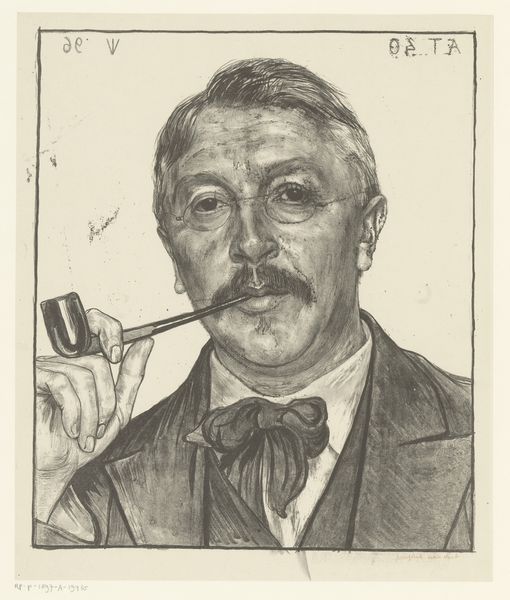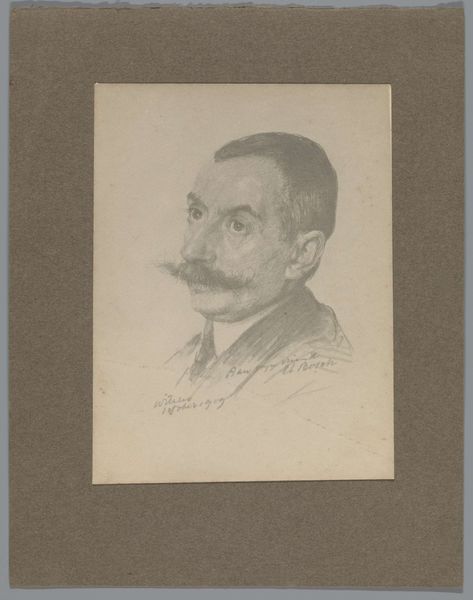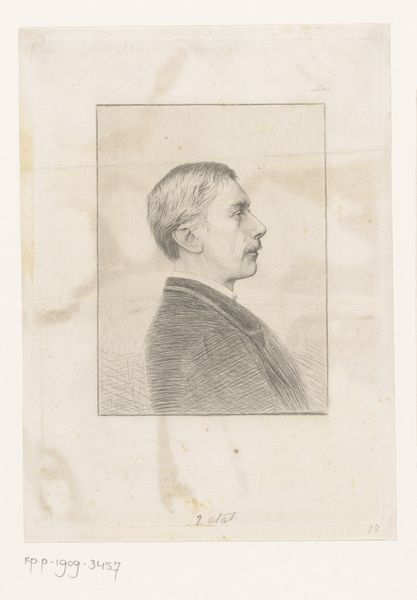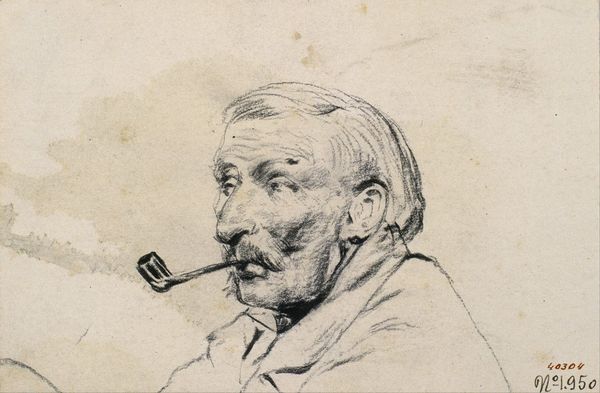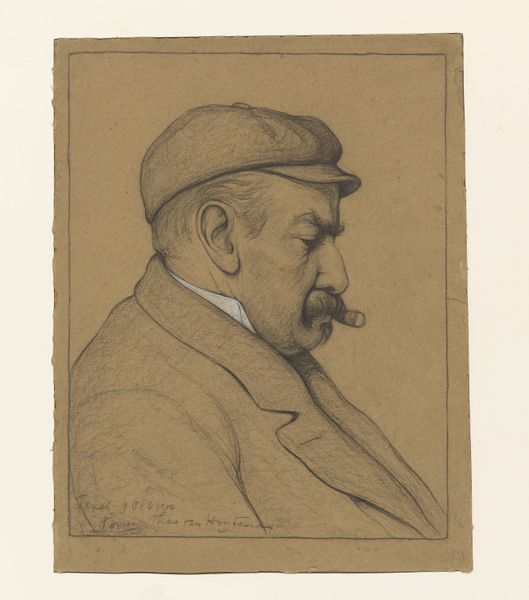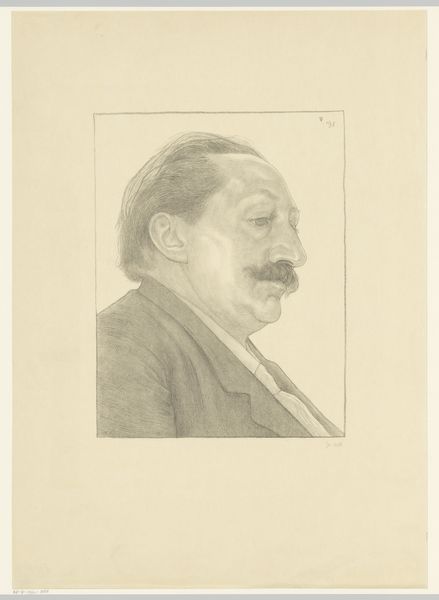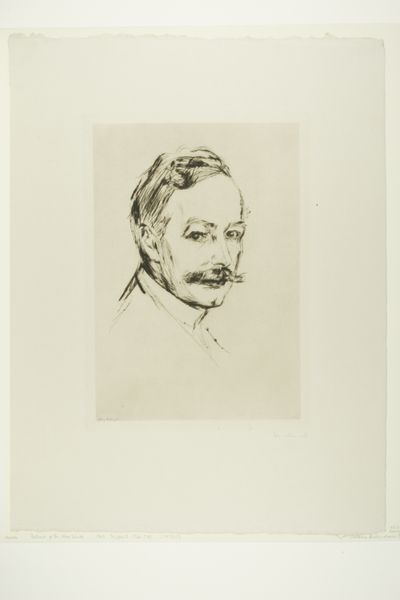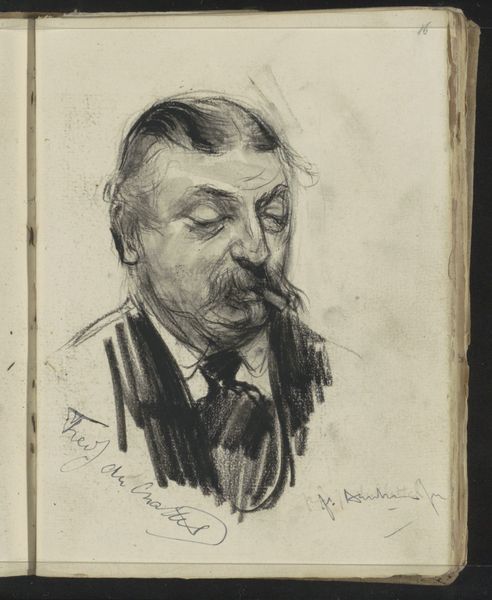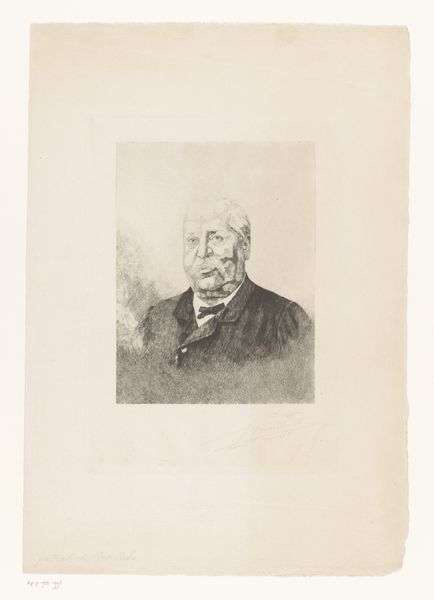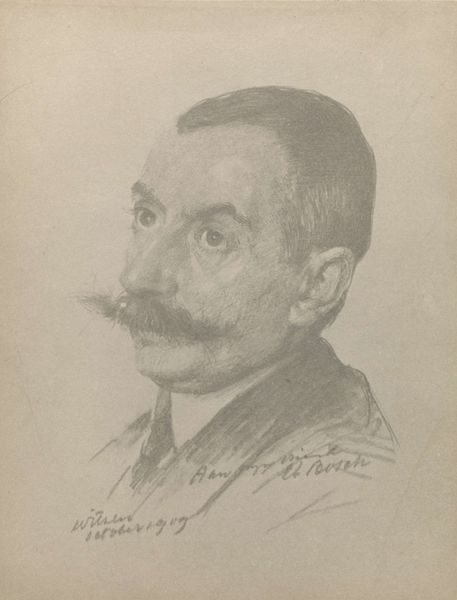
graphic-art, print
#
portrait
#
graphic-art
# print
#
realism
#
monochrome
Dimensions: height 57.5 cm, width 40.5 cm
Copyright: Rijks Museum: Open Domain
Curator: This striking portrait, "Jac. van Looy," thought to be from around 1896, is held here at the Rijksmuseum. It's a print, a piece of graphic art, rendering its subject in monochrome. What are your first thoughts? Editor: There’s an immediate sense of calm here, almost academic. The man with his pipe and spectacles seems the epitome of quiet contemplation, reinforcing stereotypes about the period and profession of the person. Curator: Indeed. And it’s fitting, as the portrait depicts Jan Veth, an artist and critic. Veth was a very influential figure in the art world in the Netherlands, especially as it concerned progressive art movements. Look closely; do you find the use of line creates a sense of… Editor: I see a strategic ambiguity, intentionally not quite sharp or resolved. It mirrors, I think, the role of the critic: suggesting ideas without prescribing. This particular composition may have even made it into widespread public circulation, subtly influencing cultural tastes. Curator: Exactly! There is a clever diffusion about how the lines blend; even within the crisp medium of print. Beyond that, this portrait was likely reproduced on newsprint, increasing Veth’s social reach. It places him among the rising intellectuals, doesn’t it? That period in history was filled with art intersecting intellectual circles. Editor: He seems every part the scholar; thoughtful but slightly distant. It’s the pipe, the bow tie... those cultural props serve to immediately codify this portrait. I’m also wondering how its status as a print, rather than a unique painting, impacted its reception at the time. Did it democratize the image? Curator: That's an important point. The print format democratizes the image in many ways. Consider how printmaking facilitated access to art and ideas, thereby circulating cultural values in ways paintings simply couldn’t. Editor: Overall, what I take away is that image isn't just a representation of an individual, but really a reflection of how art and criticism were becoming entwined with larger social narratives. Curator: Yes, precisely. I appreciate how analyzing these sorts of images opens windows into an era’s mindset.
Comments
No comments
Be the first to comment and join the conversation on the ultimate creative platform.
